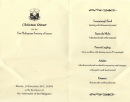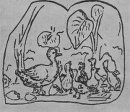Ambeth R. Ocampo's Blog, page 218
December 11, 2012
My Inquirer column today.
http://opinion.inquirer.net/42565/chu...
My Inquirer column today.
http://opinion.inquirer.net/42565/church-against-state
Church against state
opinion.inquirer.net
ALL THE positive comments regarding the National Museum lately have proven one noisy critic wrong. Over a year ago, he claimed irreparable damage to Luna’s “Spoliarium” after a decision was made to move it a few meters; and he complained about the renovation of the former Senate Session Hall, which ...
http://opinion.inquirer.net/42565/church-against-state
Church against state
opinion.inquirer.net
ALL THE positive comments regarding the National Museum lately have proven one noisy critic wrong. Over a year ago, he claimed irreparable damage to Luna’s “Spoliarium” after a decision was made to move it a few meters; and he complained about the renovation of the former Senate Session Hall, which ...
Published on December 11, 2012 15:26
We don't just talk history at home, my eldest niece followed a different path an...
We don't just talk history at home, my eldest niece followed a different path and is now into music and bands. Maybe her type of music might play in my future podcasts.
http://entertainment.inquirer.net/71637/spotlight-on-nicole-sarmiento

Spotlight on Nicole Sarmiento
entertainment.inquirer.net
There is such a palpable and distinct energy that surrounds and exists in Saguijo. It is not only because of the presence of the youth who troop to the place to watch the different bands showcase their passionate drive in making music.
http://entertainment.inquirer.net/71637/spotlight-on-nicole-sarmiento

Spotlight on Nicole Sarmiento
entertainment.inquirer.net
There is such a palpable and distinct energy that surrounds and exists in Saguijo. It is not only because of the presence of the youth who troop to the place to watch the different bands showcase their passionate drive in making music.
Published on December 11, 2012 05:00
December 10, 2012
One of life's pleasures is finding excellent Filipino food abroad. Dishes were p...
One of life's pleasures is finding excellent Filipino food abroad. Dishes were plated and served but Mrs Lopez went beyond the formal dinner setting and offered me second servings of lumpia and paint luglug. The best way to deal with temptation is to give in to it. Sarap!


Published on December 10, 2012 16:58
December 8, 2012
"Ang pangit na sisiu ng pato" was Jose Rizal's translation of Hans Cristian Ande...
"Ang pangit na sisiu ng pato" was Jose Rizal's translation of Hans Cristian Andersen's "Ugly duckling." He translated five tales for his nephews and nieces in 1886 and even made spot drawings like this one to encourage them to read and enjoy them. It is significant that he did this at the time he was writing the Noli me tangere.

History 2

History 2
Published on December 08, 2012 18:00
December 7, 2012
If you know anyone named Concepcion, she was probably born on December 8, Feast...
If you know anyone named Concepcion, she was probably born on December 8, Feast of the Immaculate Conception a holiday in the Ateneo. This grand staircase in the Ateneo Municipal in Intramuros was destroyed during the war. On these steps Rizal and his schoolmates passed the statue of the Immaculate Conception to and from class probably saying: Ave Maria Purisima, sin pecado concebida.

History 2

History 2
Published on December 07, 2012 16:39
Eight quakes during the day that I didn't notice should've prepared me for the b...
Eight quakes during the day that I didn't notice should've prepared me for the big, 5 on the scale, shortly after 5pm. Elevator shut down when I got in, I stepped out and felt the building moving. Was lucky not to be trapped in the elevator or in the trains like many people elsewhere. Thanks to all those who inquired about me tonight--I'm safe.
Published on December 07, 2012 04:56
December 6, 2012
My Inquirer column today on obscure fish.
http://opinion.inquirer.net/42223/some...
My Inquirer column today on obscure fish.
http://opinion.inquirer.net/42223/something-fishy-from-edsa
Something fishy from Edsa
opinion.inquirer.net
Most of the Philippine food terms preserved in the early dictionaries and vocabularies compiled by the Spanish friars in the 17th century relate to fish and rice. This suggests that rice has been our staple for centuries. The dictionaries also suggest that our ancestors lived close to bodies of wate...
http://opinion.inquirer.net/42223/something-fishy-from-edsa
Something fishy from Edsa
opinion.inquirer.net
Most of the Philippine food terms preserved in the early dictionaries and vocabularies compiled by the Spanish friars in the 17th century relate to fish and rice. This suggests that rice has been our staple for centuries. The dictionaries also suggest that our ancestors lived close to bodies of wate...
Published on December 06, 2012 07:05
December 5, 2012
Saw the residence of the Philippine Ambassador in Tokyo anew through the eyes an...
Saw the residence of the Philippine Ambassador in Tokyo anew through the eyes and childhood memories of YOKO ONO LENNON yesterday. Forgot my camera but got the next best thing: her stories and an autograph. Will write about it someday.
[image error]
Autographs
[image error]
Autographs
Published on December 05, 2012 20:46
December 4, 2012
Inquirer column is posted online early today.
http://opinion.inquirer.net/42101/...
Inquirer column is posted online early today.
http://opinion.inquirer.net/42101/furniture-of-the-mind
Furniture of the mind
opinion.inquirer.net
Thomas Jefferson’s library formed the nucleus of the present US Library of Congress, which is at present the largest library in the world with 32 million catalogued volumes and many, many more in other formats: manuscripts, films, recordings, photographs, etc. It is also the largest library in the w...
http://opinion.inquirer.net/42101/furniture-of-the-mind
Furniture of the mind
opinion.inquirer.net
Thomas Jefferson’s library formed the nucleus of the present US Library of Congress, which is at present the largest library in the world with 32 million catalogued volumes and many, many more in other formats: manuscripts, films, recordings, photographs, etc. It is also the largest library in the w...
Published on December 04, 2012 06:33
Indie film director, Paolo Abella, was in Tokyo last week for a preview of his R...
Indie film director, Paolo Abella, was in Tokyo last week for a preview of his Rizal documentary "First Hero." He was kind enough to have another screening in my Philippine cinema class in Sophia University where my students Rin and Yuka mistook him for a Korean or a Chinese rather than a Pinoy. Photo courtesy of Tippi de la Rosa.

Near Famous

Near Famous
Published on December 04, 2012 05:47
Ambeth R. Ocampo's Blog
- Ambeth R. Ocampo's profile
- 408 followers
Ambeth R. Ocampo isn't a Goodreads Author
(yet),
but they
do have a blog,
so here are some recent posts imported from
their feed.



